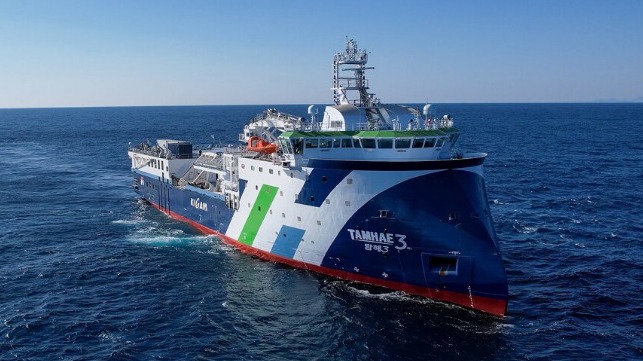First Domestically-Built Geo Exploration Vessel Commissioned in Korea

Korean officials gathered on May 31 at Pohang Yeongilman Port to celebrate the commissioning of the country’s first domestically-built geophysical exploration research vessel named Tamhae 3. The project took eight years to complete and the government invested a reported amount exceeding $130 million to build and outfit the ship.
Tamhae 3 was jointly designed by Norway’s Ulstein Design and Korea’s HJ Heavy Industries. HJ Shipbuilding won the contract to build the vessel in 2021 at its Yeongdo Shipyard near Busan. The vessel was floated for the first time in July 2023.
The new ship was built to conduct a range of exploration and research projects both in domestic waters and internationally. It employs Ulstein’s patented X-Bow and is 6,926 tons. Measuring approximately 300 feet (92 meters) it has accommodations for 50 crew.
The vessel has an operating range of approximately 20,000 nautical miles at a speed of 15 knots. It is equipped with both side thrusters and a dynamic positioning system.
The research facilities are designed to support efforts to explore the continental shelf and seabed. It has both 3D and 4D marine exploration capabilities and can deploy up to eight seismic streamers each nearly four miles long. Replacing the earlier Tamhae 2 which was built in 1996, the new ship is designed to expand South Korea’s research capabilities. It is also able to operate in both polar regions.
The vessel will be operated by the Korea Institute of Geoscience and Mineral Resources. Among the projects outlined for the vessel will be analyzing the seafloor for faults. It will also be useful in sensing seabed seismic signals and they plan to use it to select sites for carbon capture and storage.
